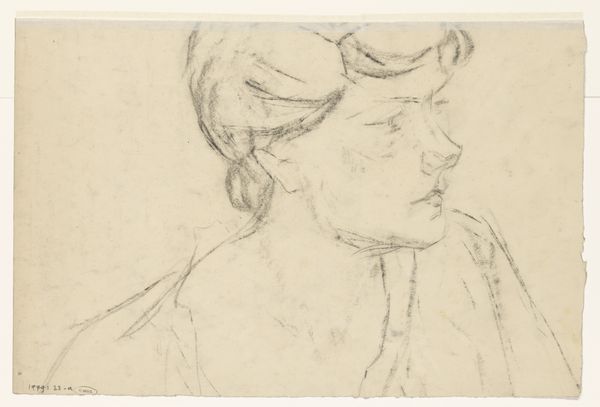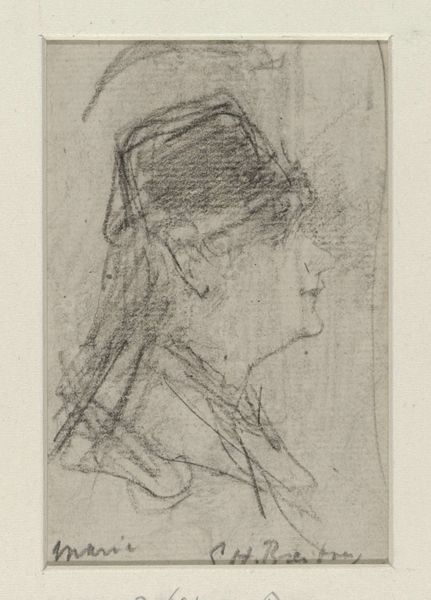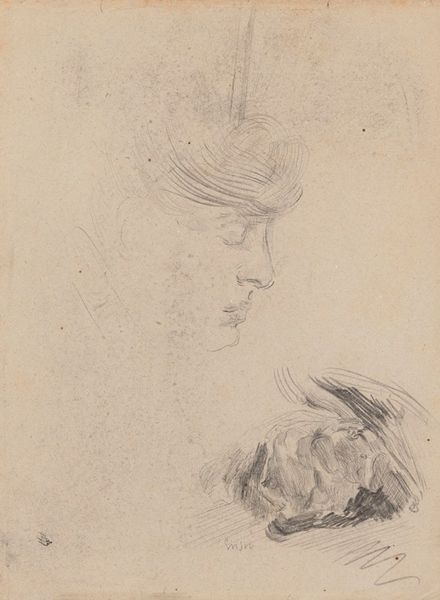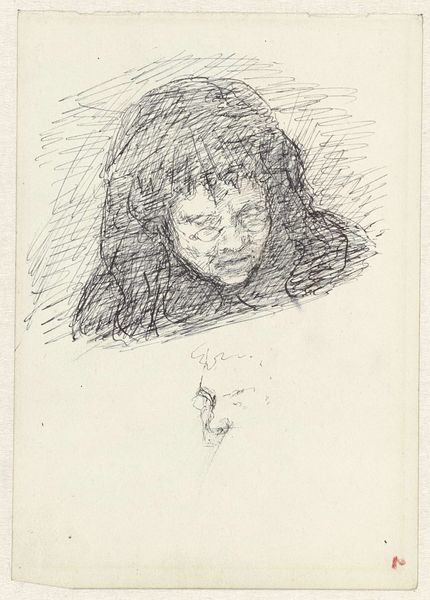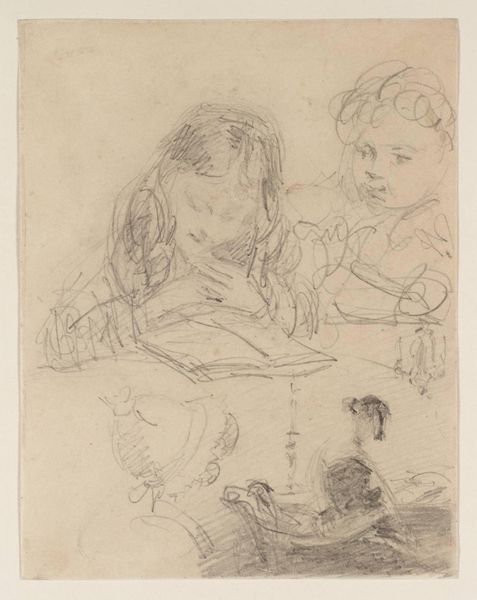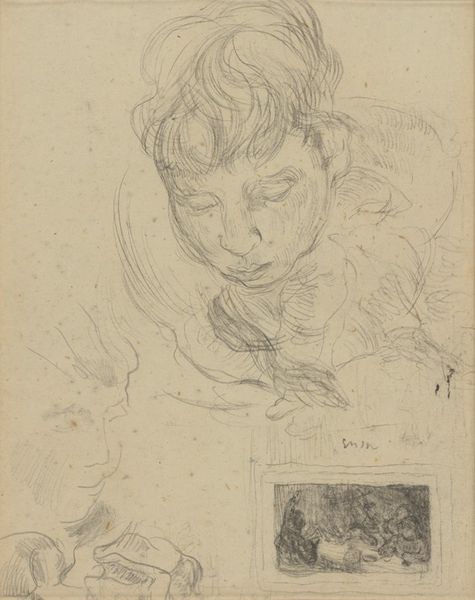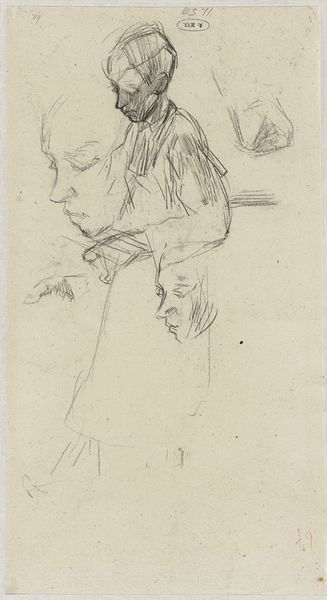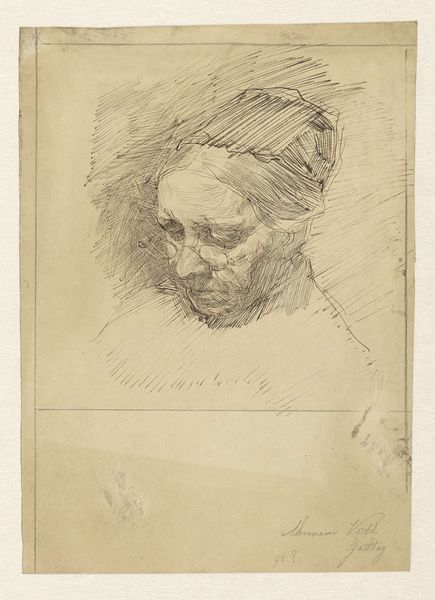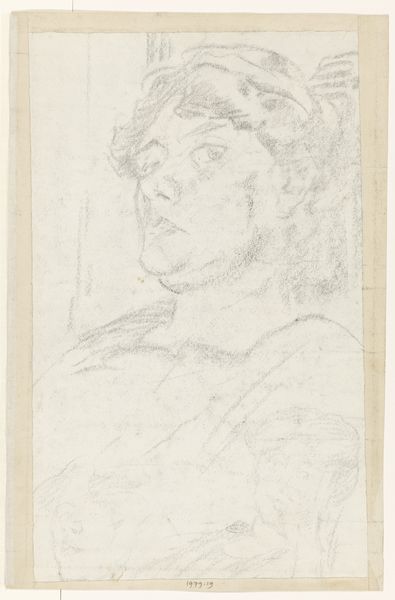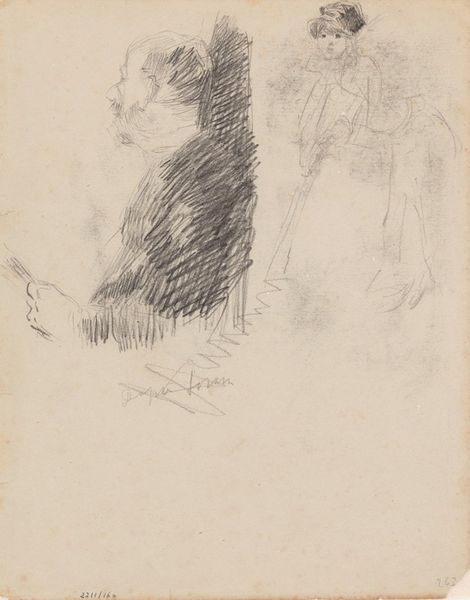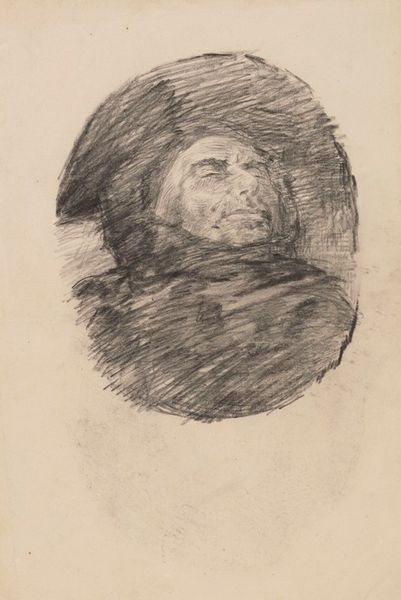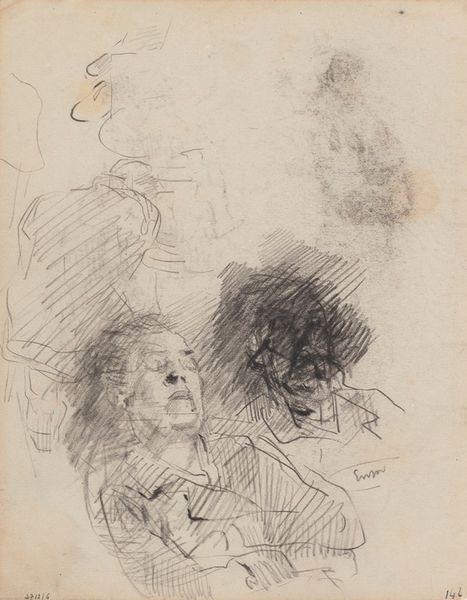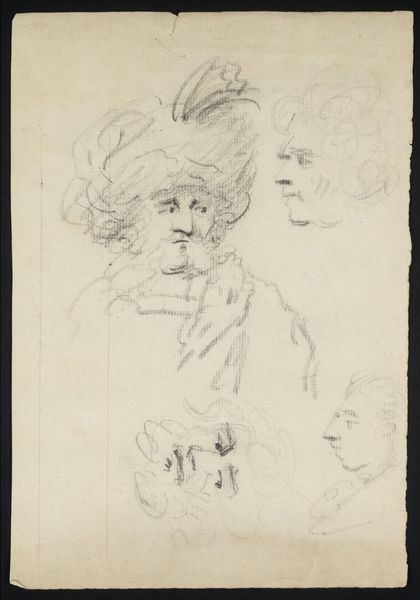
Hoofd van een vrouw met een sluier en schets van een hoofd 1834 - 1911
0:00
0:00
jozefisraels
Rijksmuseum
drawing, pencil
#
drawing
#
dutch-golden-age
#
pencil sketch
#
figuration
#
pencil
#
realism
Dimensions: height 180 mm, width 126 mm
Copyright: Rijks Museum: Open Domain
Editor: So here we have Jozef Israëls' "Head of a Woman with a Veil and Sketch of a Head," a pencil drawing that, based on museum records, he worked on from 1834 to 1911. It feels very intimate, like a private study. The top figure is more developed. What catches your eye? How do you interpret this work? Curator: This piece offers an interesting glimpse into the artistic process of 19th century Dutch Realism and its intersection with the market for art. We have to ask ourselves, who was Israëls portraying, and for whom was he portraying her? Consider the veil - it obscures, yet also invites speculation. Was this a commission? How might social and religious contexts of the time have influenced Israëls' depiction of women? The second sketch may reveal insights into his thinking or an alternative presentation for a patron. Do you agree? Editor: Absolutely. I didn't immediately consider the societal implications of the veil or the multiple sketches as reflecting the tastes or requirements of patrons. Was it common for artists to show these 'works-in-progress'? Curator: Showing preliminary sketches, especially to the public, could certainly be interpreted in several ways. On one hand, a presentation piece would indicate a democratizing of the arts by making its secrets public; it simultaneously could be used as proof of his ability to produce accurate portraits quickly and efficiently. The museum's very act of displaying it today alters its significance further, placing new value on the 'process' of art production. Editor: It’s fascinating how exhibiting this drawing transforms its purpose. I originally saw it as a simple sketch but now realize it speaks volumes about artistic practice and its social environment. Curator: Exactly! These questions about the politics of display are as valid today as they were a century ago. Ultimately, the art gains greater life when people feel empowered to create meaning of their own.
Comments
No comments
Be the first to comment and join the conversation on the ultimate creative platform.

